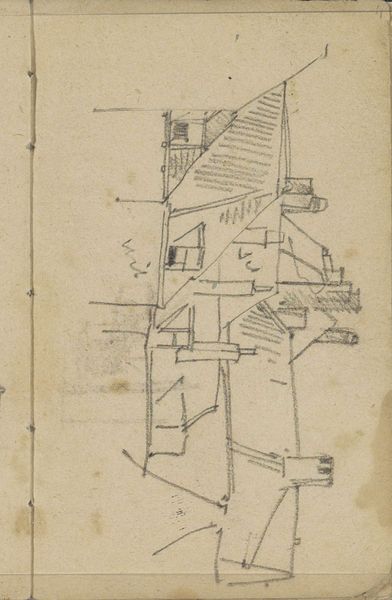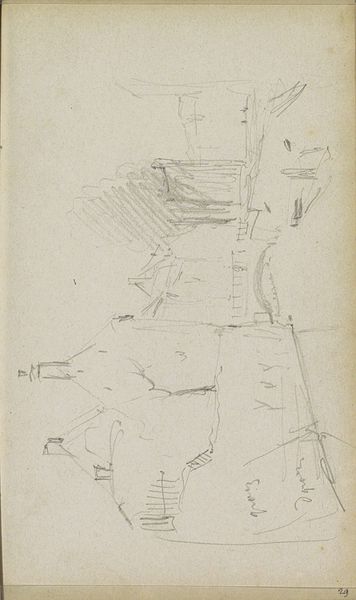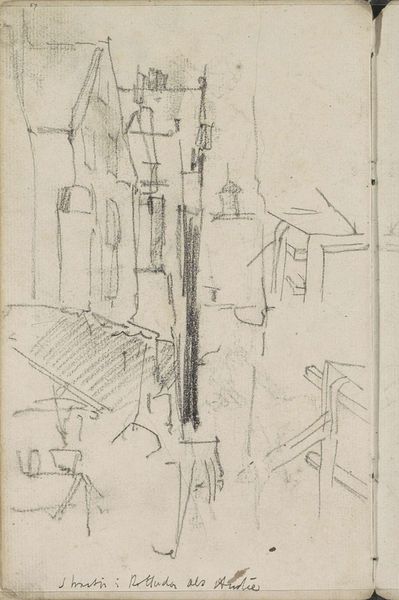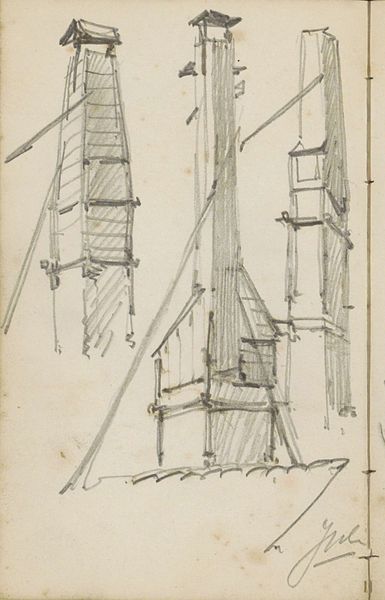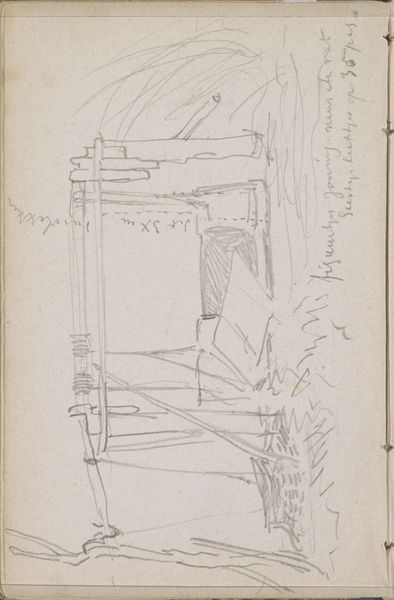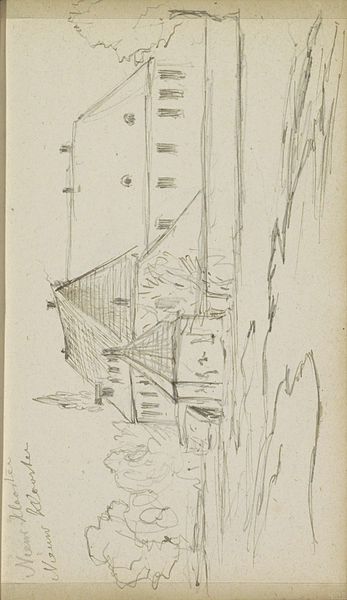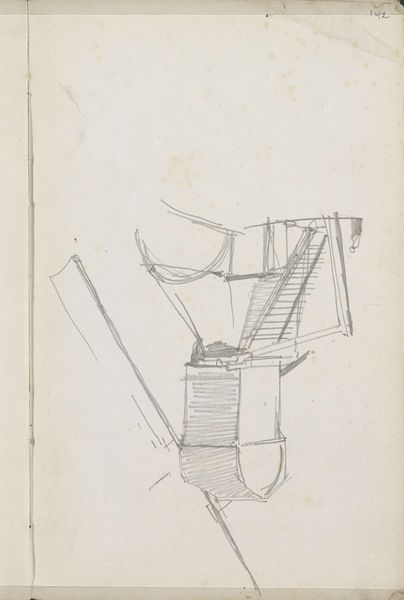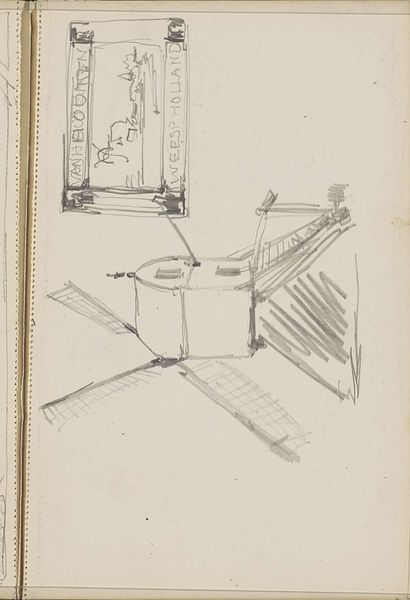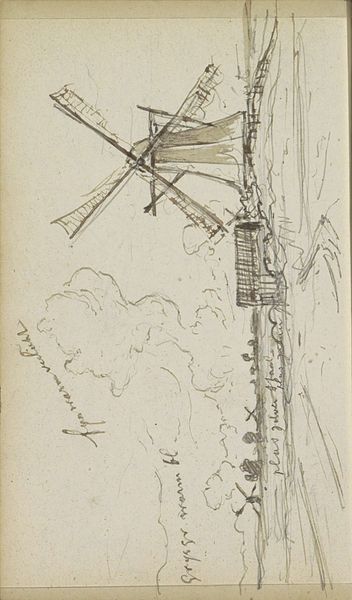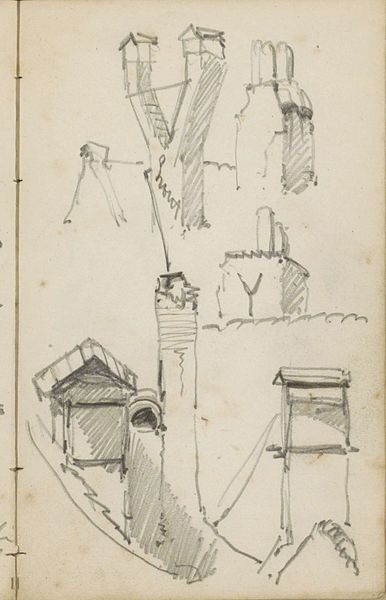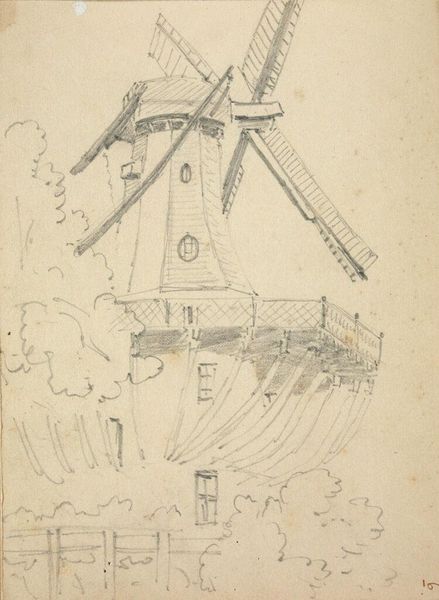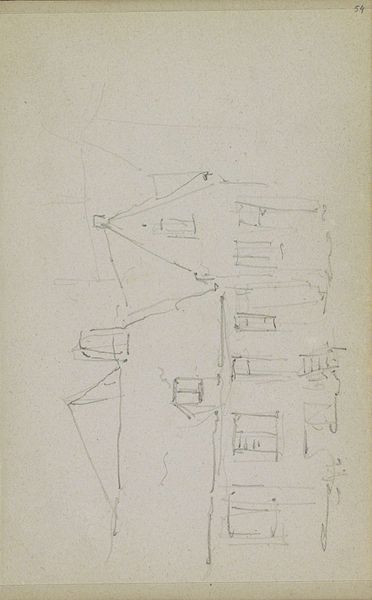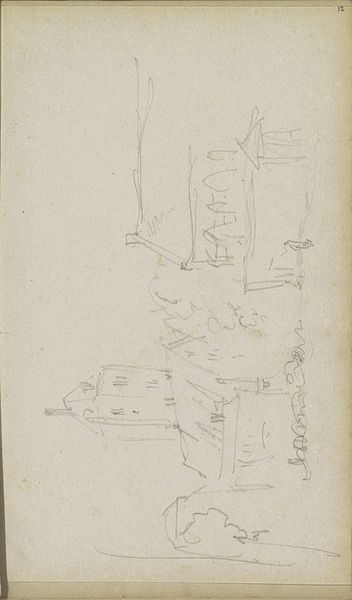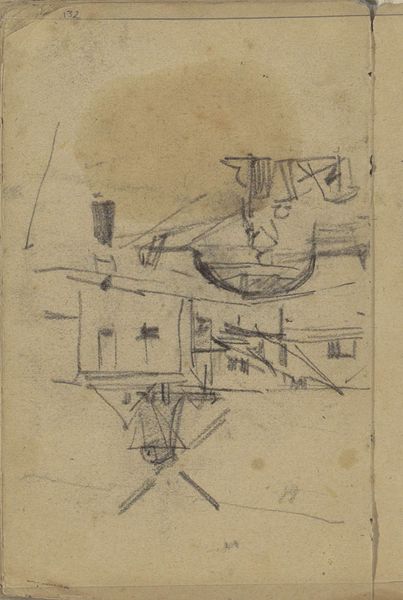
drawing, pencil
#
architectural sketch
#
drawing
#
aged paper
#
toned paper
#
light pencil work
#
quirky sketch
#
dutch-golden-age
#
sketch book
#
incomplete sketchy
#
landscape
#
personal sketchbook
#
geometric
#
pencil
#
line
#
sketchbook drawing
#
sketchbook art
Copyright: Rijks Museum: Open Domain
Editor: Here we have Johannes Tavenraat's "Windmolen," dating from 1839 to 1872. It's a pencil drawing on what looks like aged paper, currently held at the Rijksmuseum. I'm struck by how light and almost ephemeral it feels. It really has a sketchy quality, as if he was capturing a quick impression. How do you interpret this work from a formal perspective? Curator: What I see here is a clear emphasis on line and form. Note how the artist uses very economic lines to define the windmill and its structural elements. The lines aren't necessarily precise; instead, they serve to suggest the basic shapes. Editor: It almost looks like an architectural sketch rather than a finished drawing, doesn’t it? Curator: Precisely. Notice the geometric forms Tavenraat employs, especially the interplay between the cuboid body of the mill and the radial arrangement of the sails, which contributes to the dynamic tension. There's a balance in the arrangement, too. But where does your eye go first? Editor: I think I am drawn to the central, dark cube where the mill sits, which stands out. Curator: It establishes a point of visual interest around which the sketch unfolds, the aged and toned paper provides texture, setting a visual key to explore a quiet tension with its various lines. These contribute to a structured and visually satisfying whole, isn’t it? Editor: Definitely! Seeing it through the lens of form and structure makes me appreciate the artist's economy of means. Curator: Indeed. Focusing on these aspects gives us a deeper appreciation for Tavenraat’s compositional choices, shifting from the context and meaning behind its function as windmill, and observing the visual form alone.
Comments
No comments
Be the first to comment and join the conversation on the ultimate creative platform.
